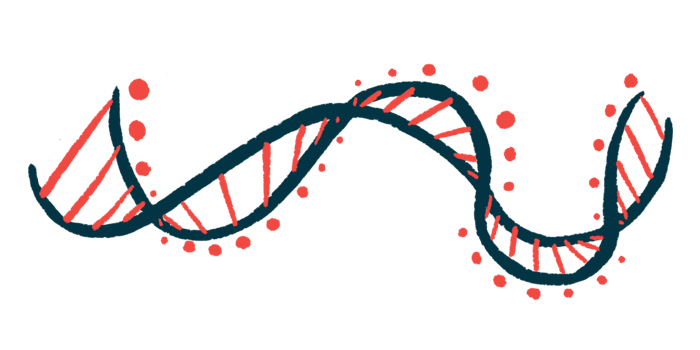Gene abnormality in FA muscle cells is a ‘double hit’: Study
Reduced activity in genes needed for mitochondrial function, higher repressor gene activity

Fredrich’s ataxia (FA) impairs the regulation of hundreds of genes in muscle cells, resulting in reduced activity in those responsible for mitochondrial function and increased activity of repressor genes, a study reports.
Addressing both aspects of this genetic abnormality “double hit” may be necessary to achieve the best therapeutic responses in FA, the scientists wrote in “Skeletal muscle transcriptomics dissects the pathogenesis of Friedreich’s Ataxia,” which was published in Human Molecular Genetics.
Friedreich’s ataxia is caused by mutations in the FXN gene, which provides instructions for making the protein frataxin. FXN mutations result in abnormally low frataxin levels, which leads to impaired mitochondria, the cellular structures needed to produce energy.
This general mechanism is well established, but how frataxin deficiency leads to mitochondrial dysfunction is incompletely understood. Getting a better understanding of these processes may open new avenues for treatment.
One type of biological analysis to help understand how cells become abnormally regulated in FA is transcriptomics, a global assessment of gene activity in a cell. Prior studies have performed transcriptomic profiles using blood and skin cells, but these aren’t usually affected in FA. Here, scientists in Austria performed transcriptomic analyses of muscle tissue, which is directly affected by FA.
The study included muscle biopsies from seven people with FA who participated in a small clinical trial. The patients ranged in age from 26 to 59 and most had moderately advanced ataxia, poor muscle control causing clumsy voluntary movements. Biopsies of calf muscle were collected before and after patients were treated with a lab-made form of erythropoietin (EPO), a naturally occurring hormone that had been considered as a potential treatment strategy, but is no longer in development following lackluster clinical trial results.
The one-two punch of FA gene activity
Compared to data from people without FA, transcriptomic analyses showed the activity of more than 1,800 genes was significantly altered in the patients’ muscle cells — 918 were active at lower than normal levels, 955 were active at higher levels. Most were altered by at least twofold in the FA patients compared to controls without muscle disease.
“Skeletal muscle transcriptomics showed profound and widespread [gene activity] changes in [FA] compared to controls,” the researchers wrote.
Many of the genes whose activity was decreased in FA are known to be involved in mitochondrial functioning. Genes with increased activity in patients tended to be involved in regulating genetic activity, with many of them being repressors, genes that limit the activity of other genes, researchers noted.
Prior studies in skin and blood cells have suggested reduced activity of mitochondria-related genes in FA, but the changes seen in these muscle sample analyses were “far more extensive,” the researchers said, adding the data suggest a “double hit” of genetic dysregulation, with impaired function of mitochondria as well as a more generalized disruption of how genes are read in the cell.
“Successful therapeutic approaches might need to target both aspects to produce a major effect on the disease burden,” the researchers wrote.
Among the affected genes, the researchers noted FA muscle cells showed a substantial increase in activity for the gene LEP, which provides instructions for making a hormone called leptin that helps coordinate how cells use energy.
FA muscle cells likely increase LEP activity to get more energy to compensate for mitochondrial damage caused by the disease, the researchers said, adding data point to leptin as a therapeutic target in the disease.
Comparisons of transcriptome profiles before and after EPO treatment showed significant changes in levels of 37 genes, including increased LEP activity to about 250 times higher than in non-FA muscle cells. While EPO trials didn’t show a meaningful clinical effect in FA, the researchers noted the results offer a proof-of-concept for using a transcriptomic analysis of muscle biopsies to assess a response to experimental treatments.
“Our data underline the great potential of skeletal muscle biopsy transcriptomics as real-time biomarker in [FA], which is sensitive to pharmacological intervention,” they wrote.







